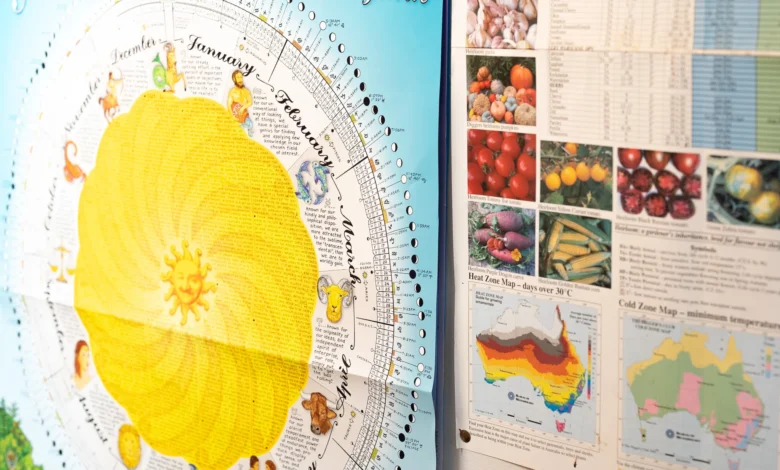The Ultimate Chrono-Gardening Guide: How to Grow a Garden from Another Time

In a world of perfectly manicured lawns and modern hybrid plants, have you ever felt the desire to create something truly unique? A garden that doesn’t just grow, but tells a story? Imagine stepping outside not just into your backyard, but into a Roman courtyard, a medieval monastery’s herb patch, or even the fantastical gardens of an elven queen. This is not a fantasy; this is the essence of a revolutionary new hobby. Welcome to the ultimate chrono-gardening guide.
Chrono-gardening is the art and science of recreating gardens from specific historical periods or fictional worlds. It’s a captivating blend of history, horticulture, and imagination. It’s about cultivating not just plants, but an atmosphere. This comprehensive guide will provide you with the philosophy, principles, and practical steps to become a successful chrono-gardener and bring a piece of the past—or a piece of a fantasy world—to life.
What Exactly is Chrono-Gardening (And Why You’ll Love It)
At its heart, chrono-gardening is a form of immersive storytelling where your medium is soil, seeds, and sunlight. It moves beyond the simple aesthetics of a modern garden and embraces a deeper connection with time and culture. Instead of choosing plants based solely on color or size, you select them based on their historical or narrative significance.
The key benefits are immense:
- An Educational Journey: You’ll become a historian of horticulture. Researching what the ancient Romans ate or what herbs were essential in a Shakespearean play provides a rich, hands-on learning experience.
- Unparalleled Uniqueness: Your garden will be a conversation starter, a living museum piece that stands out from every other garden on the block. It reflects your passion for a specific era or story.
- Preserving Biodiversity: By focusing on historical plants, you will often be working with heirloom seeds—plant varieties that have been passed down for generations. This helps preserve genetic diversity that is often lost with modern, commercial agriculture.
- A Deeper Connection to Nature: Understanding how people in the past relied on their gardens for food, medicine, and spiritual rituals fosters a profound respect for the natural world and its cycles.
This hobby is perfect for history buffs, fantasy lovers, experienced gardeners seeking a new challenge, and even beginners who want their first garden to be something truly special.
The Core Principles: Your Foundation for Success
A successful chrono-garden is built on a foundation of solid principles. Before you buy a single seed, understanding these four pillars is crucial. This is the core of our chrono-gardening guide.
1. Choosing Your Era: The First and Most Important Step
Your entire project hinges on this decision. Don’t just pick an era randomly; choose one that genuinely fascinates you, as you’ll be spending a lot of time with it.
- Historical Gardens:
- The Roman Garden (Hortus): Think formal layouts, symmetry, courtyards, and edible plants like grapes, olives, rosemary, and figs. It’s about order and productivity.
- The Medieval Monastery Garden: Highly practical, often divided into sections for medicinal herbs (a “physic garden”), vegetables, and flowers for the altar. Think raised beds, wattle fences, and plants like lavender, sage, and chamomile.
- The Victorian Cottage Garden: A romantic, seemingly chaotic explosion of flowers and edible plants. It embraces overflowing flowerbeds, climbing roses, and a mix of ornamental and useful plants like hollyhocks, foxgloves, and beans.
- Fictional Gardens:
- A Hobbit’s Garden (Tolkien): Focus on comfort and food. Potatoes (“taters”), carrots, cabbages, and simple flowers. The feel is rustic, cheerful, and a little untamed.
- Hogwarts Herbology Garden (Harry Potter): A magical twist on a medicinal garden. While you can’t grow a real Mandrake, you can plant its real-world counterparts like Mandragora officinarum (with caution!) or focus on strangely-named plants like “Dragon’s Blood” sedum or “Wizard’s Thatch” grass.
2. The Art of Authentic Research
Once you’ve chosen your era, become a detective. Authenticity is key. Look for primary sources like old gardening books, historical texts, or even art from the period. Online resources like university archives, museum collections, and historical society websites are invaluable. Search for terms like “medieval garden layout,” “Victorian era popular flowers,” or “Roman horticulture.”
3. Sourcing Period-Accurate Plants and Seeds
This is where your research pays off. You need to find plants that were actually grown in your chosen time.
- Heirloom Seed Suppliers: These are your best friends. Companies like the Seed Savers Exchange, Baker Creek Heirloom Seeds, or local equivalents specialize in non-hybrid, historical plant varieties.
- Avoid Modern Hybrids: That perfectly uniform, disease-resistant tomato from the big-box store likely didn’t exist in the 19th century. Look for plants with names that suggest their age, like “Brandywine” tomatoes or “Long Pie” pumpkins.
- Botanical Gardens: Visit historical botanical gardens for inspiration and to see period-accurate plants in person.
4. Design and Materials: Building the Atmosphere
The plants are the actors, but the garden layout is the stage. Research the design principles of your era. A Roman garden might use gravel paths and a central water feature, while a medieval garden would use simple raised wooden beds. Use natural, period-accurate materials. Avoid plastic edging, brightly colored modern pots, or synthetic materials. Opt for terracotta, wood, stone, and wicker.
Your First Project: A Medieval Monastery Herb Garden
Let’s put theory into practice. A monastery herb garden is a perfect first project. It’s historically rich, manageable in size (it can even be done in containers), and filled with wonderfully aromatic and useful plants.
Step 1: The Concept and Layout
Monastery gardens were models of efficiency. The goal was self-sufficiency. Your design should be geometric and orderly. A simple square or rectangle, divided into four smaller squares with paths in between, is a classic “four-square” or “paradise garden” layout. If you have a small space, a single raised bed or a few large terracotta pots will work beautifully.
Step 2: Preparing the Space
Choose a sunny spot. If creating a raised bed, use untreated wood like cedar or oak. Fill it with good quality soil enriched with compost—a practice medieval monks would have certainly used (they called it “manuring”).
Step 3: The Plant Selection (The “Physic Garden”)
This is the most exciting part. Here is a list of essential, easy-to-grow herbs that would be right at home in a medieval physic garden.
- Lavender (Lavandula angustifolia): Used for its calming scent, in washing water, and to deter moths.
- Rosemary (Rosmarinus officinalis): A symbol of remembrance, used in cooking and as a disinfectant.
- Thyme (Thymus vulgaris): A powerful antiseptic, used for coughs and in cooking.
- Sage (Salvia officinalis): A “cure-all” of the Middle Ages, used for everything from digestion to cleaning teeth.
- Chamomile (Matricaria recutita): Famous for its calming properties and used as a tea to aid sleep and digestion.
- Hyssop (Hyssopus officinalis): A cleansing herb, mentioned in the Bible, and used to make teas for respiratory ailments.
- Feverfew (Tanacetum parthenium): As the name suggests, used to treat fevers and headaches.
Step 4: Planting and Tending Your Garden
Arrange your plants logically. You might place taller plants like rosemary in the center or back. Follow the spacing guidelines for each herb. Water regularly but avoid overwatering. The beauty of these heirloom herbs is their resilience. They are generally hardy and don’t require much fussing. Practice organic gardening—no chemical pesticides or fertilizers.
Step 5: The Harvest and Use
The true joy of a monastery garden is using what you grow. Harvest your herbs in the morning after the dew has dried. You can use them fresh in cooking, dry them for teas and infusions, or create scented sachets. This final step completes the cycle and connects you directly to the practical spirit of the medieval gardener.
Common Challenges in Chrono-Gardening
- I can’t find a specific historical seed.
Don’t panic. Find the closest available relative. For example, if you can’t find a specific ancient wheat, a modern “einkorn” or “spelt” variety is a fantastic and historically relevant substitute. - My climate isn’t right for my chosen era.
Adapt! If you love Roman gardens but live in a cold climate, use pots for plants like figs and pomegranates that you can bring indoors during winter. The principle is more important than perfect replication. - This sounds expensive.
It doesn’t have to be. Start small with a few containers. Many heirloom seeds are inexpensive. Use reclaimed wood for raised beds and natural stones from your own yard for paths.
Conclusion: Your Garden, Your Timeline
Chrono-gardening is more than a hobby; it’s an adventure through time. It’s a way to engage all your senses, challenge your mind, and create a space that is deeply personal and endlessly fascinating. You are no longer just a gardener; you are a curator, a historian, and a storyteller. This chrono-gardening guide has given you the map. Now it’s your turn to choose a destination in time and start digging.



